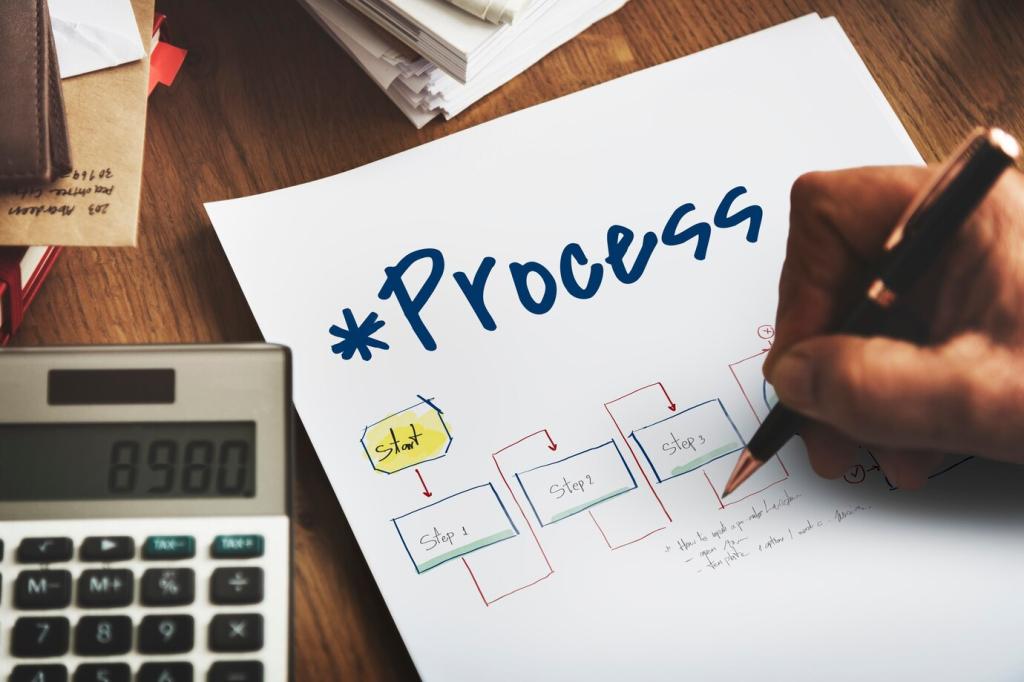
Mastering Effective Business Process Improvement Strategies
Chosen theme: Effective Business Process Improvement Strategies. Step into a practical, human-first playbook for redesigning how work flows, decisions are made, and teams win together—without losing sight of customers, culture, or measurable results.
Define and Scope for Impact
01
Craft a Problem Statement That Truly Guides
Replace vague complaints with precise, evidence-based statements that pinpoint pain, impact, and boundaries. A strong problem statement keeps your team aligned, reduces solution-chasing, and clarifies what success in process improvement actually looks like.
02
Use SIPOC to Align Stakeholders Early
Suppliers, Inputs, Process, Outputs, and Customers give shared language for complex work. In one afternoon workshop, teams discover hidden dependencies and misaligned expectations that often undermine otherwise effective business process improvement strategies.
03
Set Clear, Behavior-Shaping Success Metrics
Define lagging and leading indicators before any changes begin. When people know exactly how improvement will be measured, they prioritize smarter experiments, avoid data cherry-picking, and embrace transparency across teams and functions.

Establish Baselines and Understand Variation
Capture current performance and variation over time, not just averages. Control charts and simple run charts reveal patterns, seasonality, and anomalies that help teams choose the right interventions at the right moments.

Leverage Process Mining and Journey Analytics
Digital traces from systems can uncover detours, rework loops, and surprise handoffs. Visualizing actual flows—rather than assumed ones—often unlocks quick wins and smarter prioritization for process improvement initiatives.

Balance Voice of Customer and Voice of Process
Blend customer feedback with operational data. Complaints and delight signals reveal where experience suffers, while cycle time and defect rates show operational friction. Together, they guide meaningful, lasting business process improvement.
Analyze Root Causes, Not Just Symptoms
Apply 5 Whys and Fishbone Diagrams Thoughtfully
Go beyond surface explanations by mapping contributing factors across people, methods, materials, technology, and environment. Invite diverse roles to avoid blind spots and reach causes you can actually influence.
Value Stream Map to Expose Hidden Waste
Chart every step from request to delivery, tagging value-adding and non-value-adding activities. Teams often discover wait states and handoffs that extend lead times far more than any single task duration.
Spot Constraints With Theory of Constraints
Find the true bottleneck and subordinate everything else to its pace. Elevating that constraint first creates global improvements and prevents local optimizations that fail to move the whole system.
Improve Intelligently With Lean, Experiments, and Automation
Run Rapid PDCA and A/B Experiments
Plan, do, check, act cycles reduce risk and accelerate learning. Pilot changes with a small cohort, measure outcomes, then scale what works. Celebrate learning even when results are mixed.


Eliminate Waste Using Lean Principles
Target rework, overprocessing, waiting, and unnecessary motion. Simple interventions—clear work instructions, mistake-proofing, and visual signals—often beat expensive tools for rapid, reliable process improvement.

Control and Sustain the Gains
Document the new best way and make it easy to follow. Dashboards, checklists, and visual cues keep teams aligned, simplify onboarding, and reduce drift back to old habits under pressure.

This is the heading
Lorem ipsum dolor sit amet, consectetur adipiscing elit. Ut elit tellus, luctus nec ullamcorper mattis, pulvinar dapibus leo.

This is the heading
Lorem ipsum dolor sit amet, consectetur adipiscing elit. Ut elit tellus, luctus nec ullamcorper mattis, pulvinar dapibus leo.


From Insights to Action: Your Next Step
Choose one workflow you touch daily and write a crisp problem statement. Share it with your team for feedback and alignment before proposing any solutions or tools.
From Insights to Action: Your Next Step
Draft a tiny test with a clear hypothesis, owner, and decision rule. Keep it cheap, reversible, and visible so the team builds confidence and learns quickly together.
